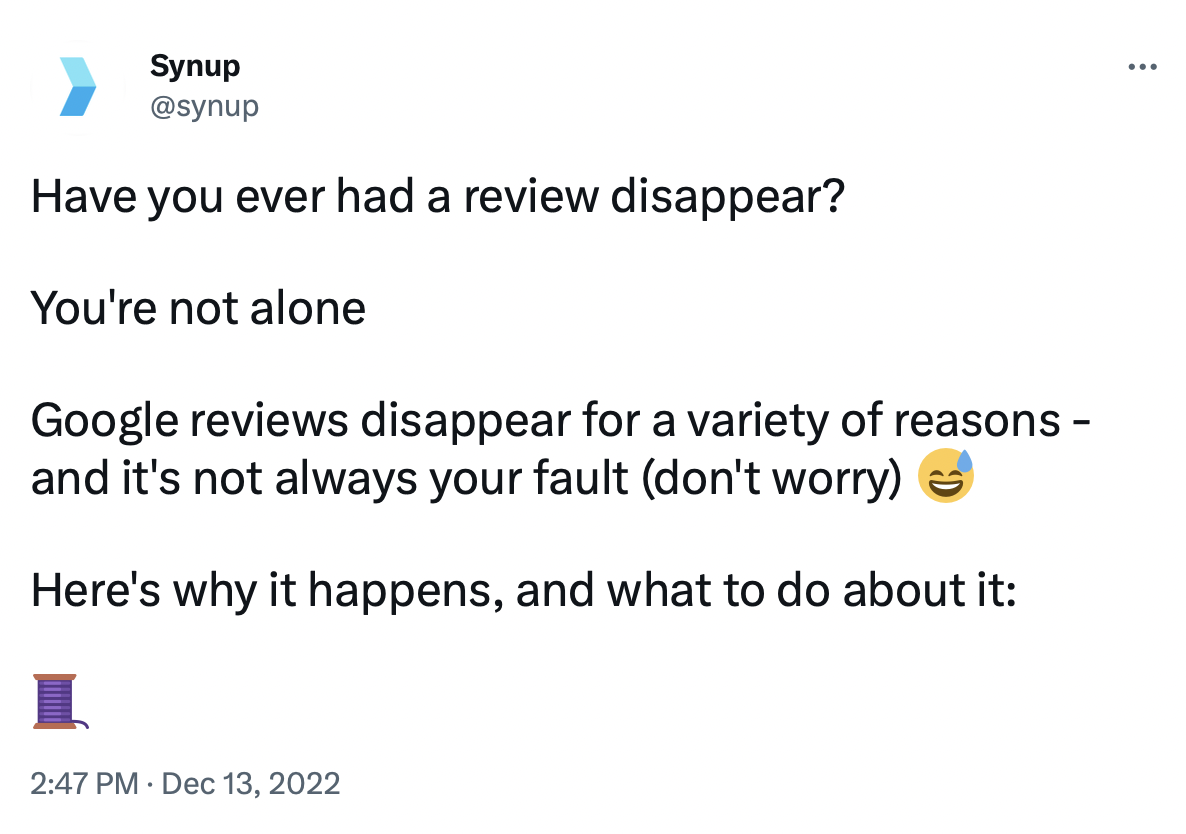
Whether it’s a 30-second video or a viral tweet, short-form content is having a moment. But you should still be creating Twitter threads.
When 280 characters isn’t enough, Twitter threads give your audience the short-form content they love while providing more information on a subject. Thanks to the extra information, threads are more likely to receive more engagement, too.
Threads also help you organize information. By putting your main points at the beginning of each subsequent tweet, you can seamlessly guide your audience through the content you want to share.

Here, we were teaching our audience about disappearing reviews - and how to combat them. Because we separated our points into individual tweets, our audience can scroll to find the information they care most about (presumably, recovering their reviews). But users who want to know more can stop and read the whole thread, too!

Sounds great, right? Or does it sound like a hassle?
If you use a social media management platform for Twitter, it’s easy to forget about threads altogether. That’s why when we built Synup Social, we built thread-creation directly into the platform. Maybe you’ve already noticed the ability to create Twitter threads. But if you haven’t, take a look at our post-builder below:

Check the “Twitter thread” box, and start typing to create a thread. Your thread can be as long as you want (unlike a typical tweet) - and contain links, images, or anything you want.
Since it’s typically hard to fit a link and brand-specific hashtags and your tweet into one post, threads are a life-saver. Twitter also tends to deprioritize tweets that include links (to keep users on the platform), so Twitter threads are a great way to link out to your website or another page while maintaining engagement.

Once you create your Twitter thread, you can publish and schedule your post just like any other using the buttons in the lower right corner.
If you have a longer post you created for a different platform, you can also use the Synup Social publisher to post both with one click!

As seen above, we decided to post our thread to Facebook, too. This can work for any publisher you have linked with Synup Social, including Pinterest, Instagram, LinkedIn, or Facebook.
Just don’t forget to reformat your thread across publishers!
Creating Twitter threads is an essential part of driving engagement and interest from your audience, so we hope you try it out.





.svg)

























